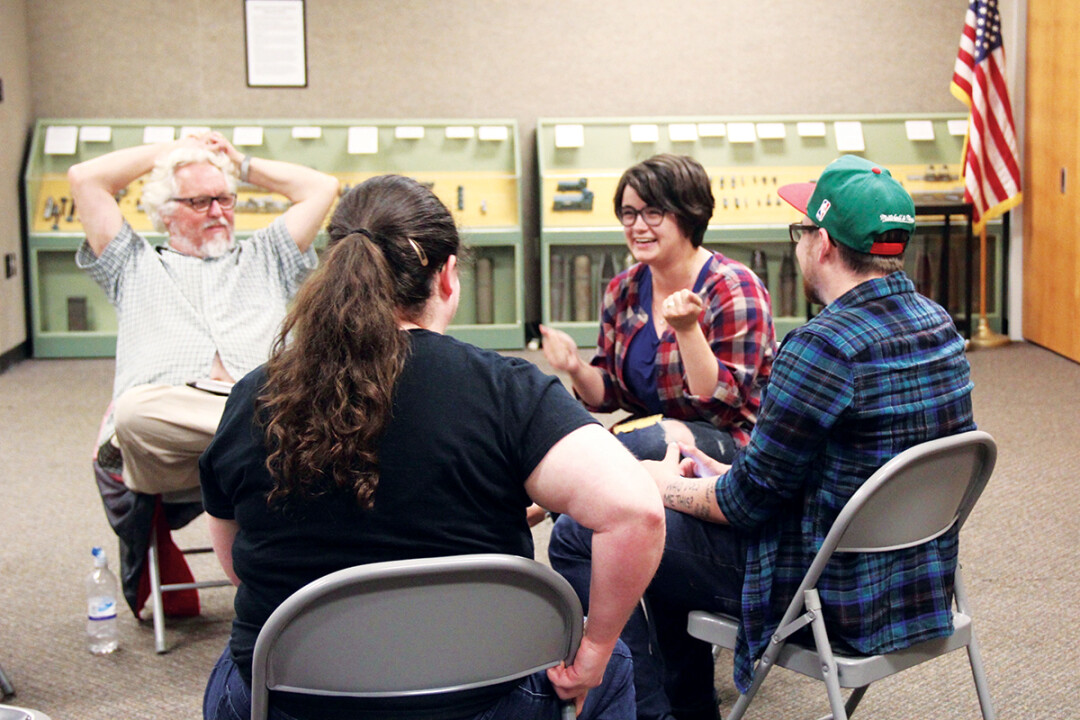Millenia of Melodies: New club sings old songs
Lauren Fisher, photos by Rachel Worthing |

Two crows discuss whether to eat the eyes of a fallen knight. No one is able to find a girl’s head after her gruesome murder. A young couple is buried together beside the Chippewa River after they die on the rapids. A far cry from modern pop hits, these subjects represent the themes of hundreds of traditional songs throughout history. Songwriters commented on many of the experiences we sing about today – love, a night at the club (or rather, pub), bad breakups – with consideration to the cruelty of life and nearness of death.
“The really beautiful thing about this kind of music is the oral tradition and the connection with it – it’s very personal. It’s a really cool way to humanize the past.” – Mikaela Sturz, founder of the Chippewa Valley Traditional Singers Club
Mikaela Sturz founded the Chippewa Valley Traditional Singers Club to bring light to these dark ballads, inviting local musicians, storytellers, and history buffs alike to sing and learn about centuries of songs. The club meets on the second Saturday of each month at the Chippewa Valley Museum. Sturz plans on discussing and teaching traditional songs that originate from the Chippewa Valley, such as “River in the Pines,” which was popularized by Joan Baez in the ’60s, and older music from all over the Western world.
“The really beautiful thing about this kind of music is the oral tradition and the connection with it – it’s very personal.” Sturz said. “It’s a really cool way to humanize the past,” she continued. While the stories might be darker, people can still relate to many of the themes.
Sturz became involved with traditional music through her musical studies at Century College. Her primary interest was in the wire-strung harp, but absent a program of study she concentrated on vocal performance, practicing traditional music. She took up with the Traditional Singers Club that meets monthly in St. Paul.
“People are kind of shocked a lot of the time by the brutality of old music,” Sturz said. “But life itself was brutal, so that’s what people sang about.” She recently visited with local elementary music classes to teach and sing traditional music. After sharing the ballad of Pearl Bryan, the aforementioned young murder victim, one student asked her “how many of these songs are about murder?” She posits it’s around 60 percent. “How many are about death in general?” the student followed up. Sturz replicated the humored, matter-of-fact tone she had used when she replied it had to be somewhere around 99 percent.
Sturz tries to be as accurate as possible when discussing the history of traditional music, but throughout history the purveyors of traditional music have been storytellers. That’s part of the fun of the genre. “You don’t always have to be right about traditional music because people make things up all the time,” she said. “Sometimes fabrications make better stories.”
The Chippewa Valley Traditional Singers’ Club meets the second Saturday of each month at 3pm in the Chippewa Valley Museum. For more information, email cvtradsingers@gmail.com




















